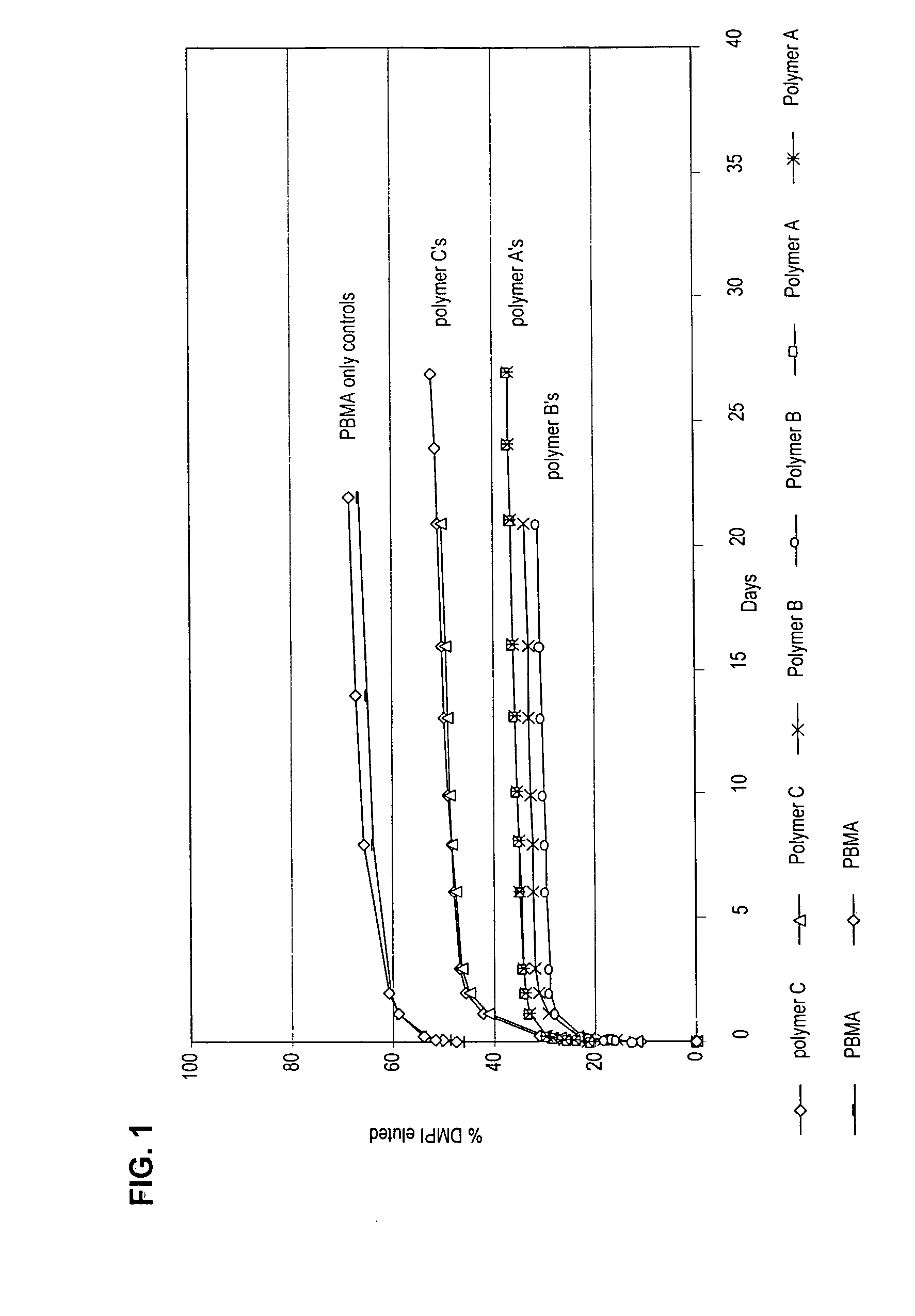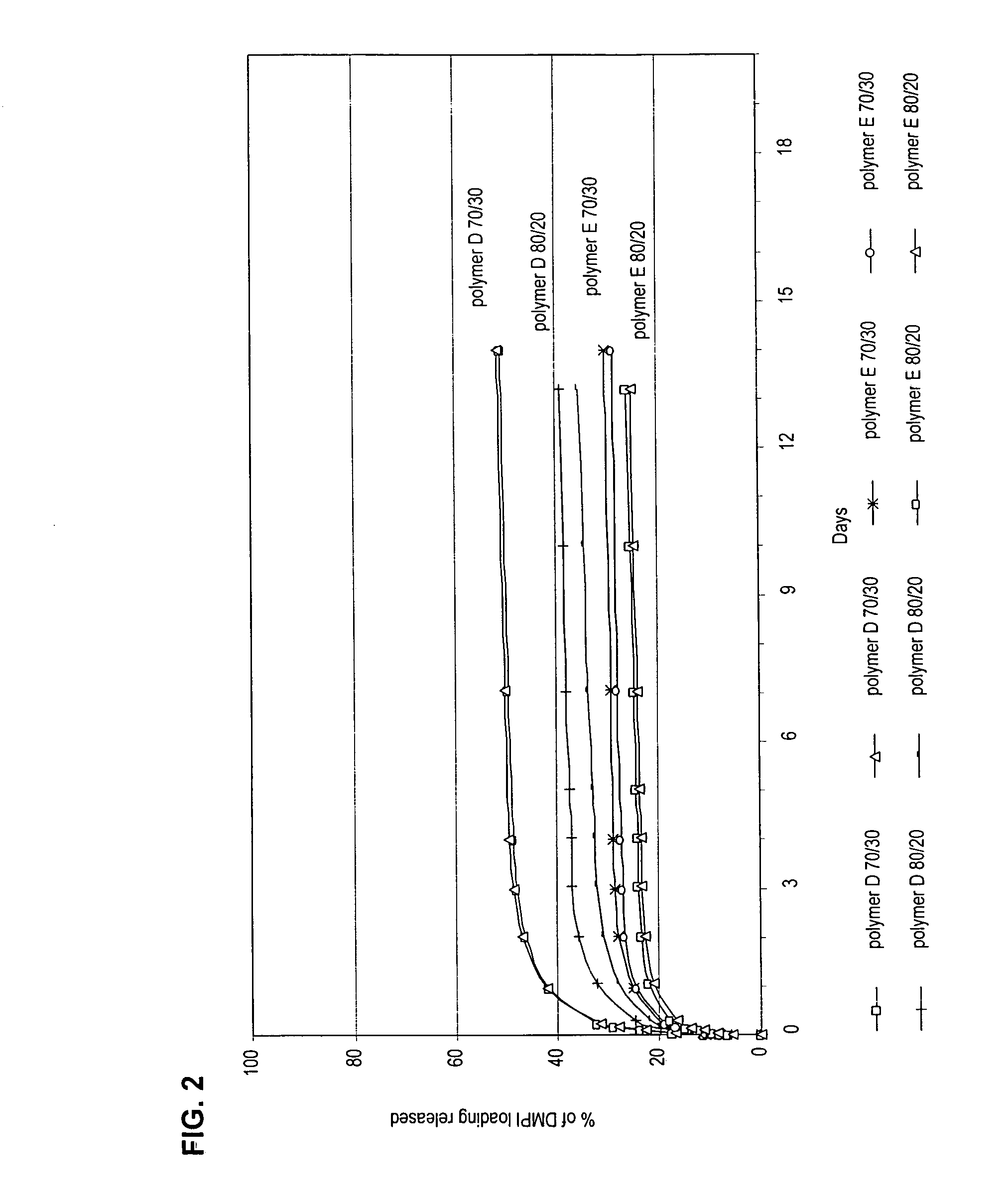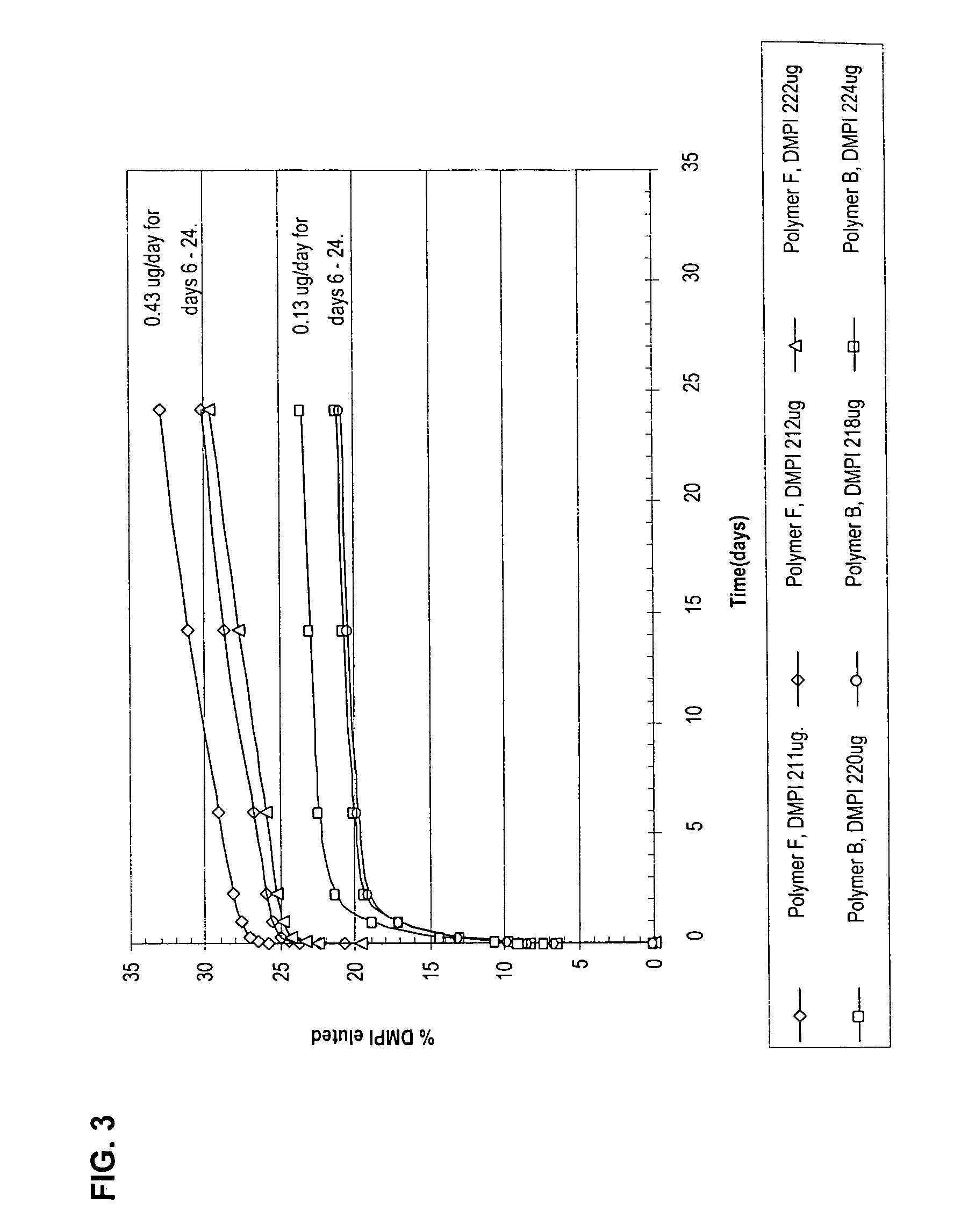Devices, articles, coatings, and methods for controlled active agent release or hemocompatibility
a technology of active agents and hemocompatibility, which is applied in the direction of prosthesis, catheters, blood vessels, etc., can solve the problems of poor elution rate control, insufficient elution rate, and active agent elution
- Summary
- Abstract
- Description
- Claims
- Application Information
AI Technical Summary
Benefits of technology
Problems solved by technology
Method used
Image
Examples
example 1
The Present Polymer Compositions Provide Controlled Elution of a Charged Active Agent
[0130] Butyl methacrylate-co-acrylamido-methyl-propane sulfonate copolymers (pbma-co-AMPS) with the active agent 1,4-di-methyl pyridine iodide (DMPI) incorporated in them provided controlled elution of the active agent.
experiment 1
Materials and Methods
[0131] The poly(n-butyl methacrylate) (pBMA), n-butyl methacrylate (BMA), 2-acrylamido-2-methylpropanesulfonic acid (AMPS), 1,4 dimethylpyridinium iodide (DMPI) were obtained from Aldrich, Milwaukee, Wis. 2,2 Azobis (2,4-dimethylpentanenitrile) (Vazo® 52) was obtained from Dupont, Wilmington, Del. The pBMA was purified by extraction with organic solvent to remove impurities, e.g., residual monomer.
[0132] Polymer A: BMA (20 mL,17.9 g, 126 mmole), AMPS (1.66 g, 8 mmole, 6 mol-%) were dissolved in 60 mL N,N-dimethylformamide (DMF). This reaction mixture, along with a stir bar, was placed into a 120 mL amber jar. The solution was sparged with argon for 45 minutes. The initiator, Vazo® 52 (0.06 g, 0.24 mmole) was added and the jar placed in a 58° C. water bath. The reaction was run for 18 hours and then allowed to cool to room temperature over an additional 2 hours. The reaction mixture was poured into 2000 mL of deionized water at 5° C. to precipitate the polymer...
experiment 2
Materials and Methods
[0141] Polymer D: BMA (17.6 mL, 15.6 g, 110 mmole), AMPS (5.0 g, 24 mmole, 18 mol-%) were dissolved in 60 mL N,N-dimethylformamide (DMF). This reaction mixture, along with a stir bar, was placed in a 120 mL amber jar. The solution was sparged with argon for 1 hour. The initiator, Vazoo 52 (0.06 g, 0.24 mmole) was added and the jar placed in a 58° C. water bath. The reaction was run for 17 hours and then allowed to cool to room temperature over an additional 2 hours. The reaction mixture was divided in half in order to complete two different precipitation procedures to obtain polymer D and polymer E.
[0142] For polymer D, 40 mL (½) of reaction mixture was poured into 1800 mL, deionized water at 5° C. to produce the acid form of the AMPS in the copolymer. The polymer was dried 24 hours at room temperature in a fume hood, followed by 24 hours in a vacuum oven at room temperature. The copolymer was purified by dissolving it in 25 mL of solvent and precipitating in...
PUM
| Property | Measurement | Unit |
|---|---|---|
| molecular weights | aaaaa | aaaaa |
| molecular weight | aaaaa | aaaaa |
| molecular weight | aaaaa | aaaaa |
Abstract
Description
Claims
Application Information
 Login to View More
Login to View More - R&D
- Intellectual Property
- Life Sciences
- Materials
- Tech Scout
- Unparalleled Data Quality
- Higher Quality Content
- 60% Fewer Hallucinations
Browse by: Latest US Patents, China's latest patents, Technical Efficacy Thesaurus, Application Domain, Technology Topic, Popular Technical Reports.
© 2025 PatSnap. All rights reserved.Legal|Privacy policy|Modern Slavery Act Transparency Statement|Sitemap|About US| Contact US: help@patsnap.com



